Thirty-one years ago, Charleston welcomed us—my husband John, our two young children, Rough our Jack Russell terrier, and me, a painter, potter, and art teacher. We had left our stone cottage on the side of a mountain in Wales for Crystal Lake, Illinois, on a two-year job stint. At the end of our stay, John was told to “look for somewhere nice to live on the Eastern seaboard and establish a US headquarters.” So he opened the US headquarters for a European business in Summerville, and here we are!
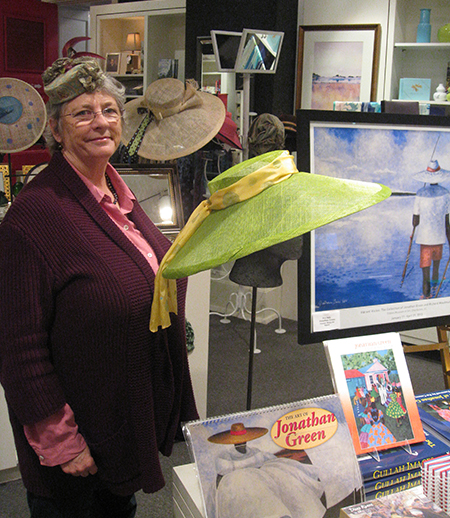
The Gibbes Museum has been a part of my life since my first visit to Charleston. I taught at the museum school on Queen Street, and I also took art classes there. As a teacher at Charleston’s Ashley Hall school for girls, I involved my students with the museum’s early internship program for high school students, which provided a behind-the-scenes look at the museum and its programs, and took many field trips to the Gibbes. One of my favorite projects was in 2006, when the eighth grade art class created a treasure hunt for children to use when visiting the exhibition Babar’s Museum of Art. It was a lovely “by children for children” adventure. I retired from Ashley Hall last year, but I am delighted that my connection with the museum continues… this time with HATS! You may have seen some of my fascinators or hats in the Museum Store.
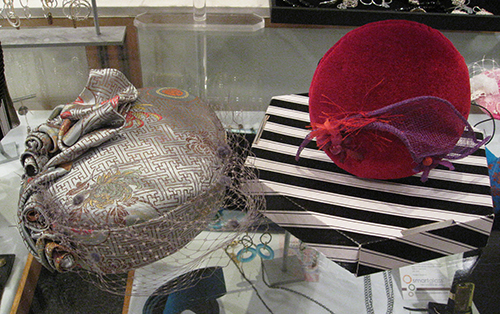
The history of millinery, or hat making, intrigues me. The word comes from Milaners, those Grand Tour folks who visited Milan to stock their wardrobes with the latest fashions. I am grateful to all those “mad hatters” poisoned by the stiffener they used, and to the medieval Guilds of Hatters, Haberdashers, Broderers, and such. They ensured that skills of a high standard were passed on. I enrolled in a millinery course at the London College of Fashion a number of years ago, and have since participated in several workshops to hone my skills and learn new ones. Just last November, I studied with Bridget Riley and Dillon Wallwork—both distinguished English milliners—at Chateau Dumas in France. From them I learned a variety of trimming techniques that are making their way into the Gibbes shop.
Millinery is surprisingly hard work. My favorite part is blocking, the process of tightly stretching damp fabric over a block of wood that has been carved into a hat form. When the fabric dries and is eased off the block, a hat is born! The block can be tall, short, indented or smooth. There are also tips and brim blocks—think of the different brims on a fedora or a Kentucky Derby hat. I will never forget the block room at The London College of Fashion, dark and creaky with shelves of old, well-used blocks of every size and shape imaginable. I felt the same sense of wonder when I visited the workshop of Guy Morse-Brown, a block maker who received the MBE for his services to millinery. Morse-Brown’s blocks were brand new, but they too were like perfect pieces of sculpture, surrounded by wood shavings. Guy’s son, Owen, has taken over the family business and he told me that blocks were traditionally made by hand because of the need to be oval not round. In the nineteenth and early twentieth century thousands of blocks were needed and machinery was invented to meet the demand. A master block was created and reproduced by a copy machine, but the copies were rough and had to be finished by hand. Today, block makers still require high level of carving skill and employ “hard hand work” using saws, planers, and sanders. Knowing this, I enjoy the sense of collaboration between milliner and block maker. I have always seen my blocks as sculptural forms—I even display them as such. They bear a remarkable resemblance to the large, hand built pots I made as one of Middleton Place’s potters, and they sit side by side on a shelf in my studio.
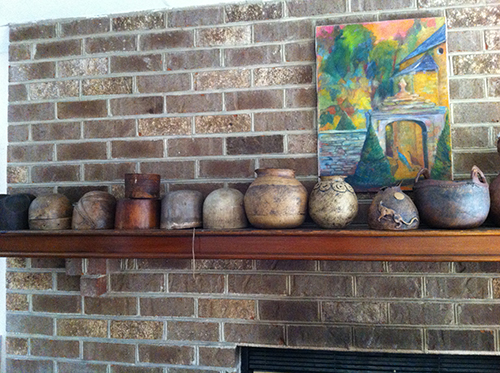
When I begin a hat, I have usually imagined how I will construct it, but sometimes it evolves gradually. It must fit the head comfortably and enhance the beauty of the wearer, while upholding traditional design principles and millinery standards. I find it fascinating! Each piece is a unique piece of art/craft. In order to make the fabric malleable, steam is required. I cover the block with plastic wrap to protect it and steam the felt until it gives in and the fibers stretch over the block. Sometimes, this requires a great deal of pulling and coaxing. It is quite tough on the hands and muscles, and it is easy to burn an errant hand. The moment when all the wrinkles and lumps disappear never fails to thrill me. It is magic!
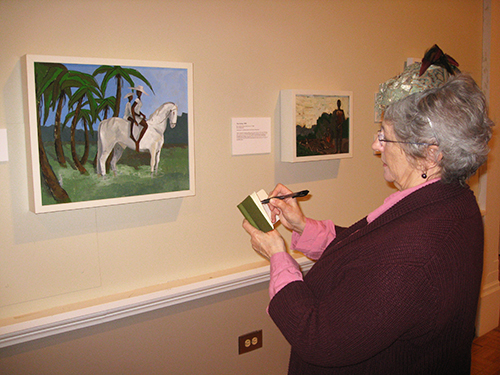
Often, the hat is made in two pieces and sewn together. I stitch wire around the brim edge, and ribbon over that, then add decorative trimmings like sinamay swirls or silk flowers that I have made, or curled feathers, most of which I find. Each time I make a hat, I strive for perfection. I rarely use a sewing machine preferring to work by hand. I enjoy the break from technology. I am currently working on a series of hats inspired by the current exhibition, Vibrant Vision: The Collection of Jonathan Green and Richard Weedman, as well as by the permanent collection, and the museum’s architectural details. Most of the pieces influenced by the works in Vibrant Vision will be made on Morse-Brown blocks, but the hats created with inspiration from elsewhere in the museum are likely to be blocked on my collection from the early twentieth century. I look forward to perusing the galleries, sketch book in hand, as I design this year’s collection. The first polka dots appeared in January, and I am sure there will be more!
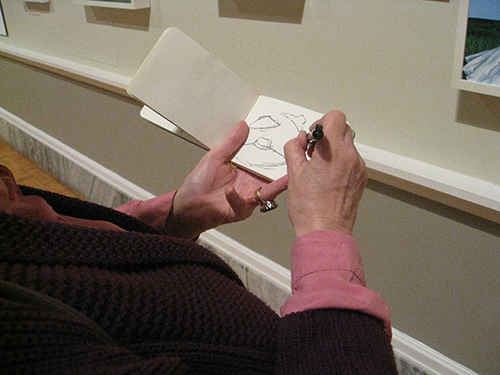
Like technology, the Gibbes Museum is ever evolving. I am writing this for the blog, the shop is more vibrant with quality work by local artists and artisans, and the whole place has become a welcoming spot to bring my five-year-old triplet granddaughters for an exciting adventure. I am grateful to be part of this dear old, and, yes, contemporary museum, albeit in a very small way. And do try on a hat or a fascinator when you next pass the shop!
—Meyriel J. Edge, milliner and guest blogger
Published March 12, 2013

